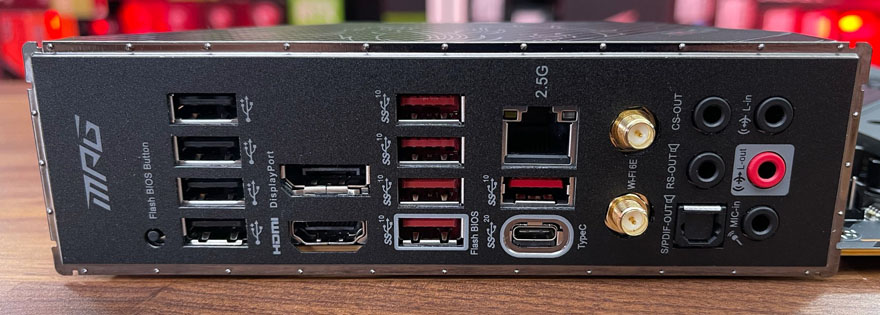MSI MPG Z690 Carbon WiFi Motherboard Review
Peter Donnell / 2 years ago
A Closer Look
The Carbon lives up to its name, with some cool carbon fibre effects on some of the heat shielding and the rear I/O guard. It’s also keeping to those colours too, with a blend of black and dark grey throughout. Actually, if it wasn’t for the little bits of gold/yellow in the bottom left, it would be completely devoid of colour!
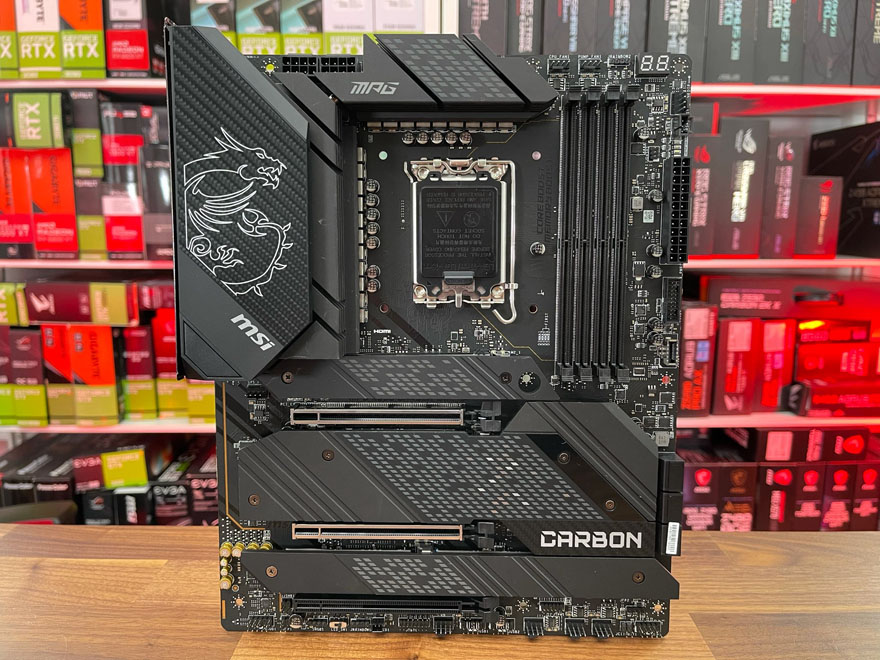
It’s a good looking board though, and it’s packing some mighty hardware too. It uses an 18+1+1 Phases design, with digital PWM IC and a 75A Smart Power Stage, ensuring you can hit those boost clocks long and hard without any issues.
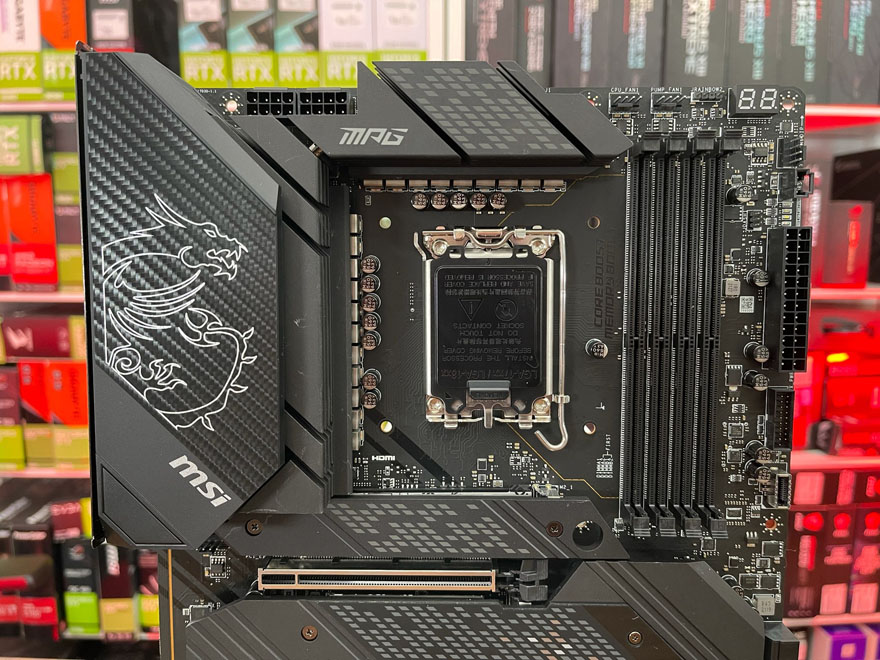
Of course, all that power hardware is going to get pretty toasty, so you’ll be glad to see those heatsinks have quite a few layers, providing extra surface area to pull the heat away and prevent the system from throttling.
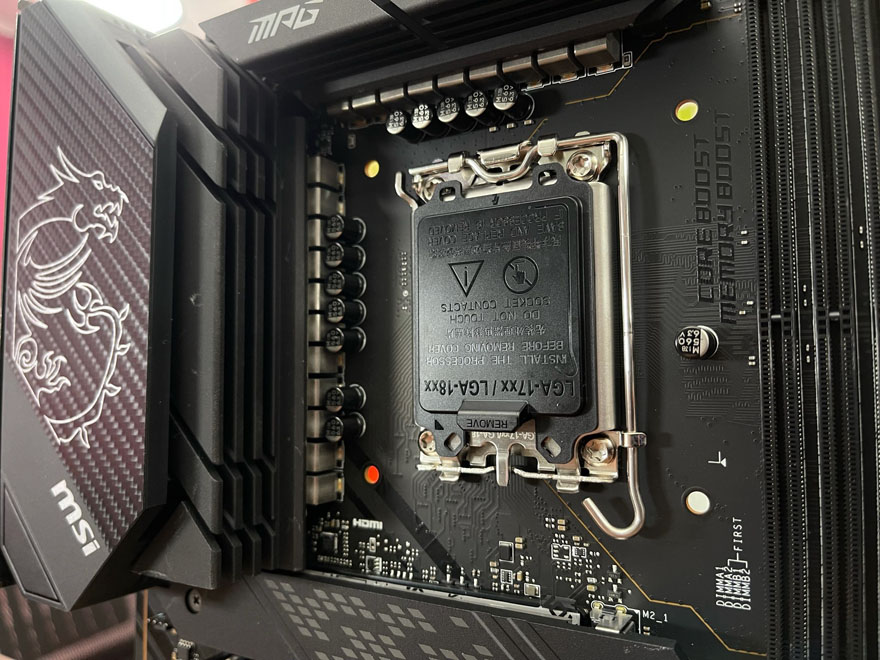
Power comes from a pair of 8-pin headers, ensuring more power and voltage stability for high-end CPUs and boost/overclock performance.
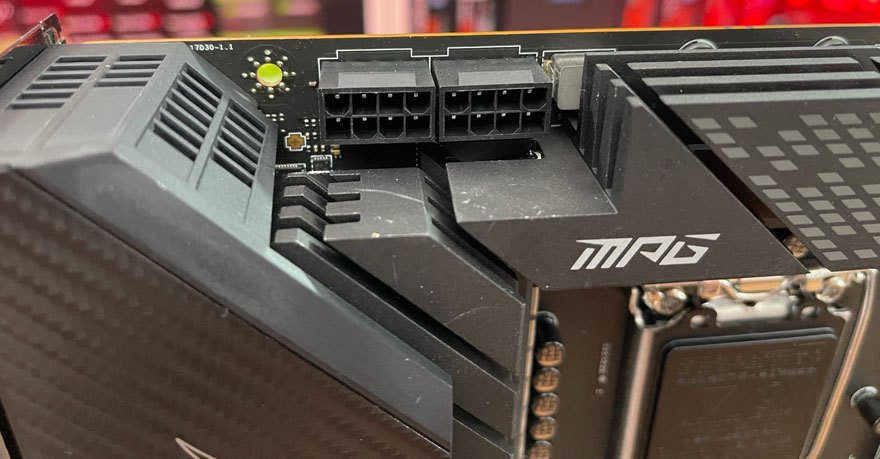
While Z690 boards can be equipped with DDR4, MSI has gone for the latest DDR5. It’ll support up to 6666 MHz+ using the latest XMP 3.0, but you will be able to push way beyond that with overclocking and high-end kits.
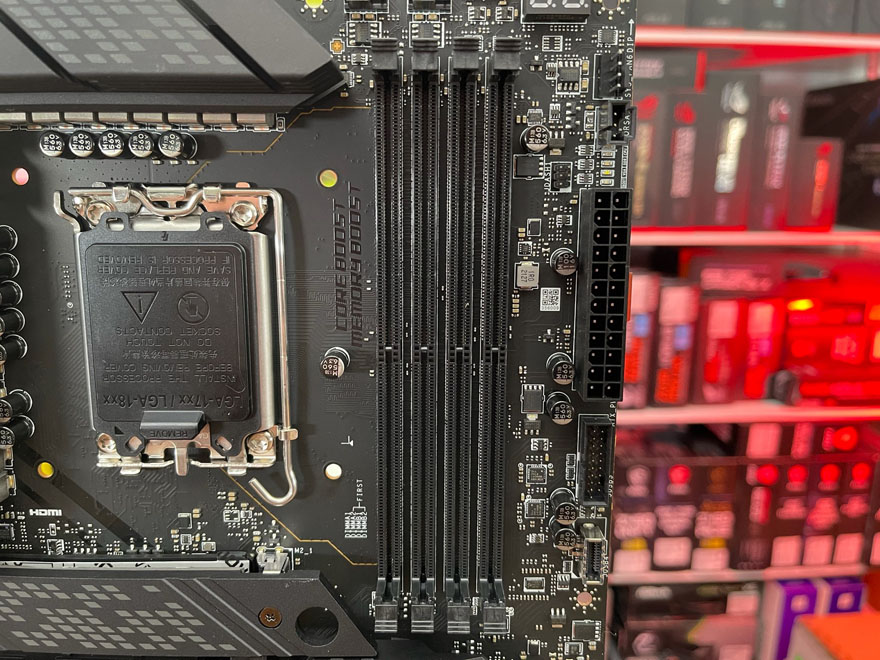
There’s a built-in debug LED in the top, which is always a welcome addition.
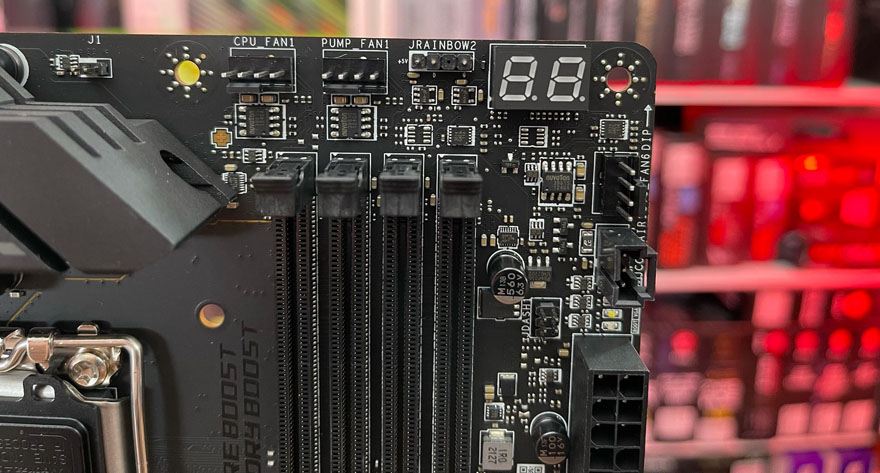
The lower part of the motherboard features a lot of armour/heatsinks, which protect the PCB, but also provide extra cooling to the M.2 mounts that reside below them. There’s an M.2 mount above the top PCI slot which has a double-sided heatsink. There are two more below that with a very large heatsink, and two more at the bottom, with a full-width heatsink there. All five M.2 slots run at the Gen4 standard, so you’re certainly set for fast storage!
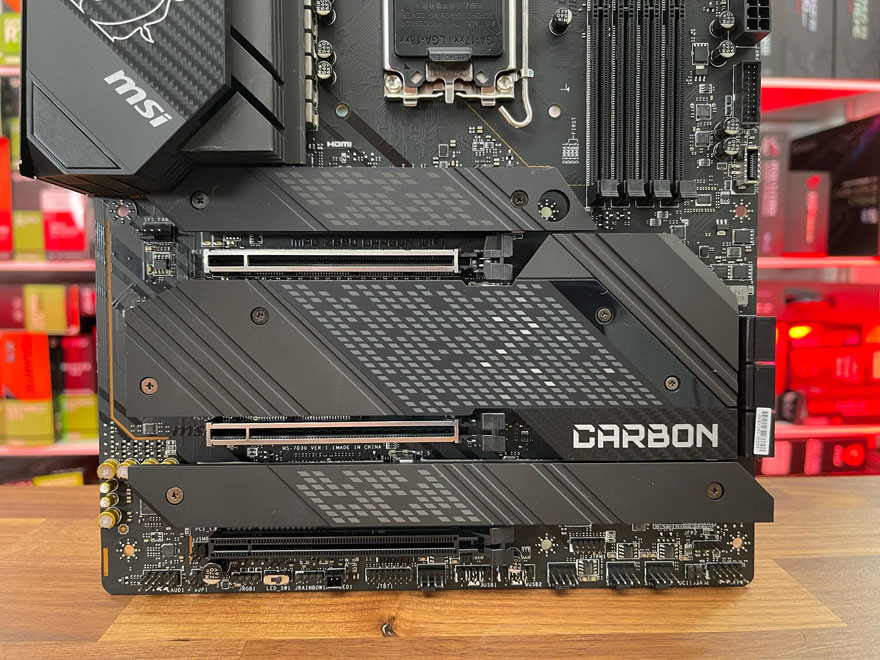
There are six SATA3 ports too, should you have some older SSDs or HDD to hook up.
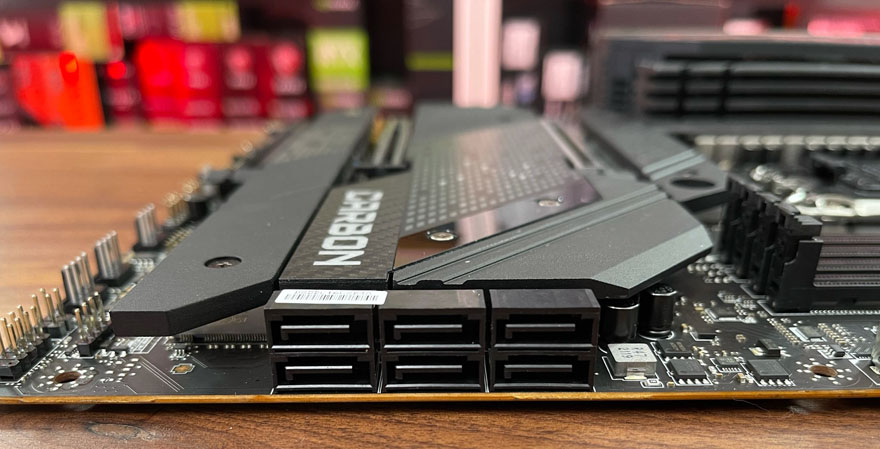
There are two PCIe 5.0 x16 lanes on this motherboard, each using their new SMT armoured design, which is more robust than previous generations, but also provides less interference and electrical noise too. However, with 128GB/s of bandwidth, it’s also future-proofing you for upcoming add-on cards.
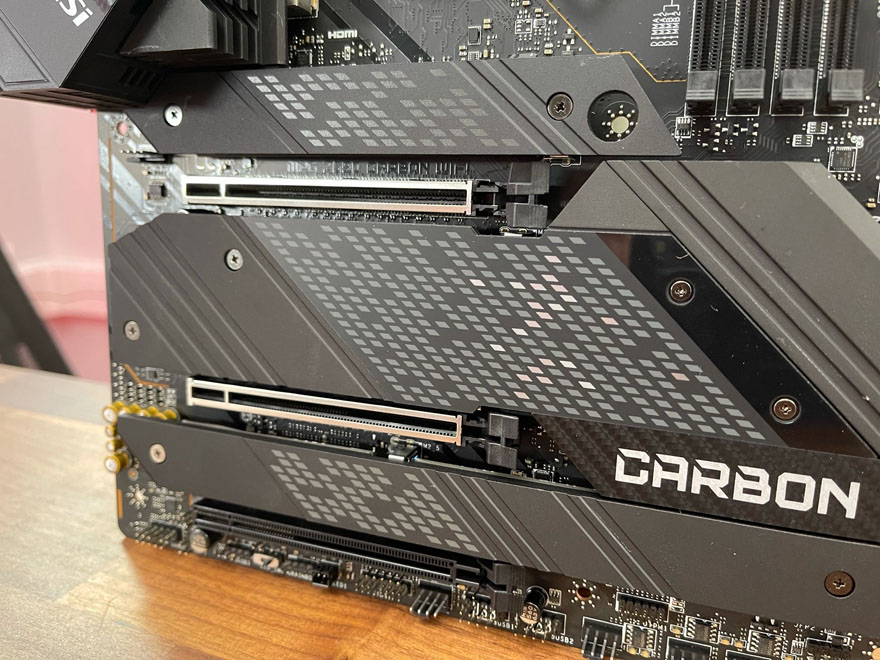
There’s also a PCIe 3.0 x4 slot at the bottom, should you need it.
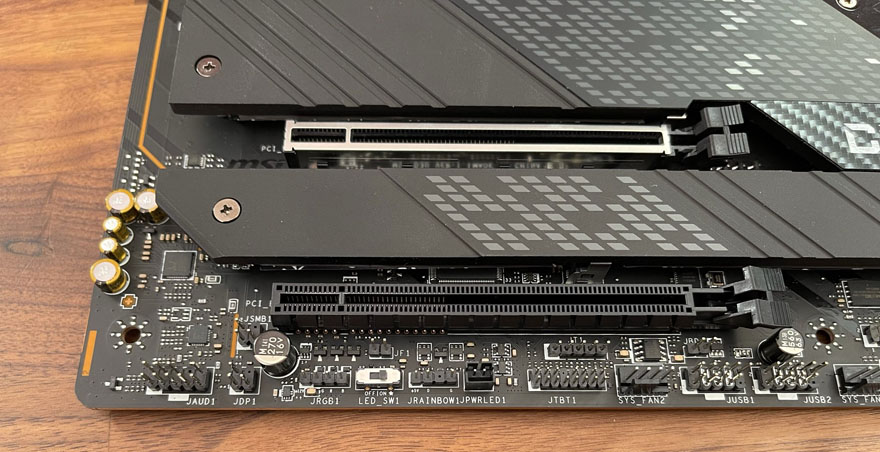
The audio hardware is decent too, with the ALC4080 chipset providing playback at (up to) 32-bit/384kHz. There are some high-quality audio capacitors too, and the built-in AMP/DAC is capable of powering up headphones up to 600 Ohm.
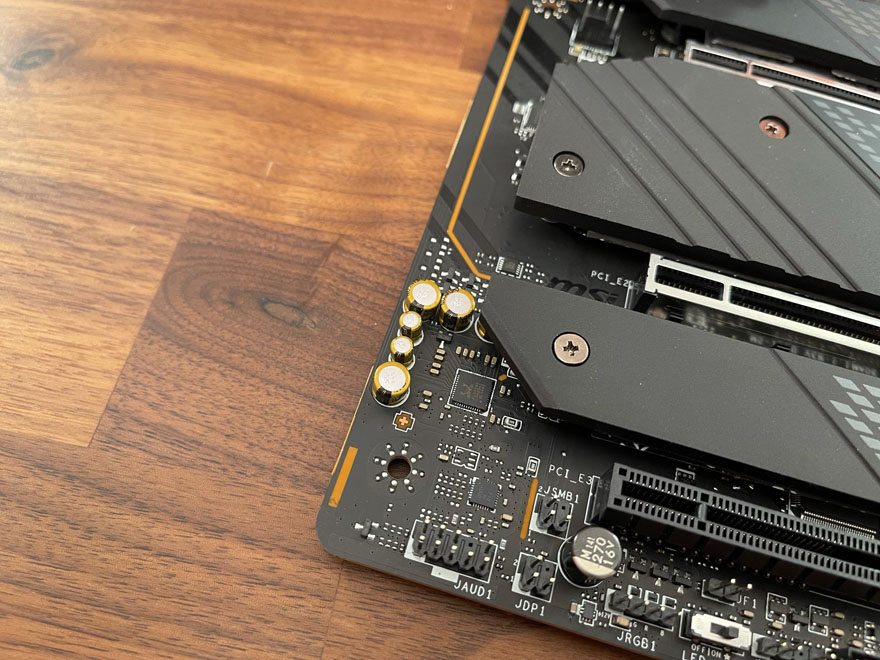
The rear I/O is well equipped, with four USB ports at the top, but further down, you’ll find five USB 3.2 Gen 2 ports, and a super-fast USB 3.2 Gen 2×2 Type-C (20Gbps). There’s both HDMI and DisplayPort, but unfortunately, I do not know which versions of each. The networking is excellent though, with both 2.5 GbE LAN as well as the latest Intel WiFi 6.
